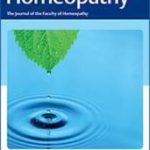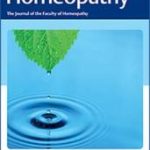Effect of Ointments of Sulphur or Pyrogenium on Larvae of Cochliomyia hominivorax (Diptera: Calliphoridae)

Background - Myiasis by Cochliomyia hominivorax (Diptera: Calliphoridae) is a serious problem in animal health in tropical and sub-tropical regions. Ointment-type preparations are a good option of formulation in cases of myiasis in farm and pet animals. Sulphur and Pyrogenium have already shown in-vitro efficacy on C. hominivorax. This article describes an in-vitro experiment to test the inhibition of development from exposing larvae of C. hominivorax to two homeopathic ointments (prepared individually with Sulphur or Pyrogenium). Methods - The homeopathic ointments were produced by mixing sterile lanolin, tocopherol and homeopathic medicine on a hydroalcoholic basis according to the Brazilian Homeopathic Pharmacopoeia. Larvae were obtained from naturally occurring myiases in sheep (wild larvae) or from a laboratory colony. The test consisted of exposing a group of 10 third-stage C. hominivorax wild larvae in contact with Sulphur or Pyrogenium ointment, or a group of 15 laboratory-propagated larvae in contact with the alcoholic vehicle of the ointment or homeopathic medicines prepared in sterile water (Sulphur or Pyrogenium), and observing the effect on the development, longevity and fertility of the blow-fly specimens. Results - The C. hominivorax larval inhibition rate was 90.0% for the Sulphur ointment group and was 86.0% for the Pyrogenium ointment group. The non-alcoholic vehicle and the alcoholic vehicle inhibited the development of 24.0% and 22.08% of the larvae respectively. Sulphur prepared in sterile water inhibited the development of 74.67% and Pyrogenium in sterile water inhibited 73.33% of larvae. Specimens that survived contact with homeopathic ointments had their longevity decreased and did not reproduce. Conclusion - Ointments of Sulphur or Pyrogenium were able to inhibit the development of C. hominivorax larvae. The ointment vehicle was harmless.






Lascia un commento
Devi essere connesso per inviare un commento.